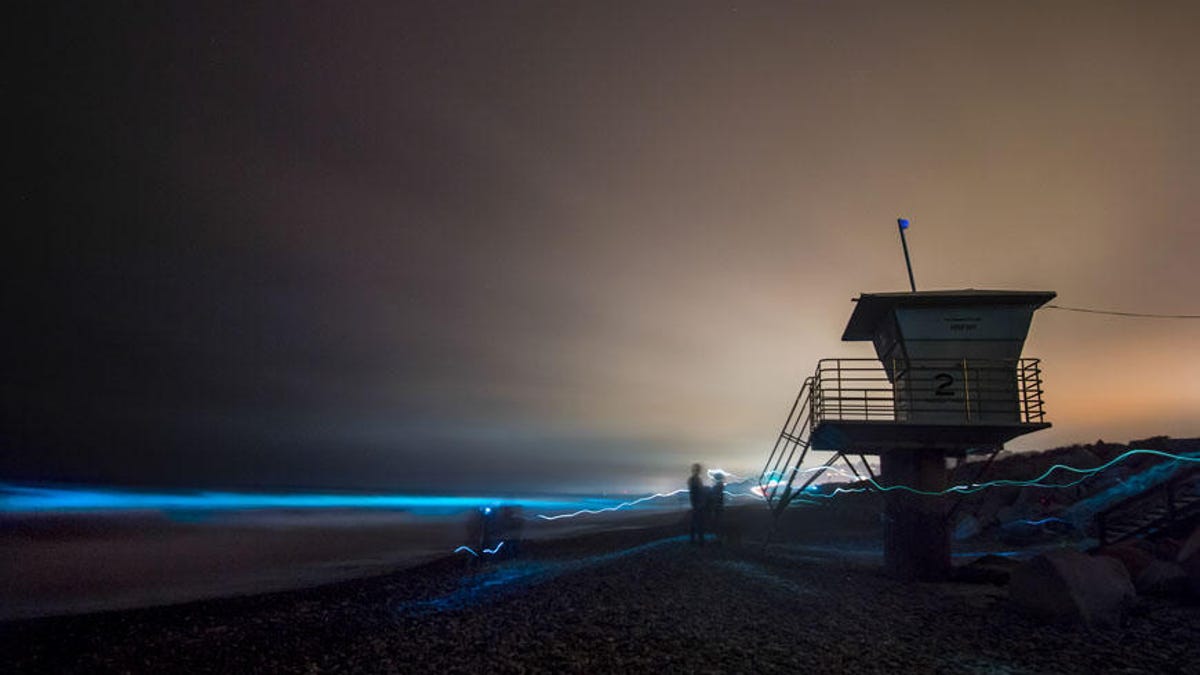Glowing California beach looks like an aurora of the sea
Tiny organisms are putting on a big light show along some California beaches thanks to a rare red tide.
It may look otherworldly, but a striking display of light seen on some beaches in Southern California this week has a very earthly (or ocean-y) explanation.
The Scripps Institution of Oceanography shared a photo on Wednesday showing a radiating blue light coming from the waves near a beach in San Diego. The gentle glow is reminiscent of views seen of auroras or Northern Lights. It's caused by a collection of tiny organisms called dinoflagellates, some of which are known for their bioluminescence.
A red tide offshore San Diego is bringing a spectacular display of #bioluminescence to beaches at night, as captured in this photo by John H. Moore. Scripps scientist Michael Latz said the red tide is due to massive numbers of dinoflagellates including Lingulodinium polyedra. 🌊 pic.twitter.com/JnSlXGBuEs
— Scripps Oceanography (@Scripps_Ocean) May 8, 2018
The San Diego coast is hosting a red tide, which is a bloom involving these single-cell organisms that can make the water appear red.
The National Ocean Service prefers to call these potentially toxic occurrences "harmful algal blooms." Scripps says this particular red tide in the San Diego area is not known to be toxic, but some people may be sensitive to contact with it.
The dinoflagellates are a type of marine phytoplankton. You can get a closer look at them through the Scripps Plankton Camera site. "Red tides are unpredictable and not all of them produce bioluminescence," Scripps notes, saying scientists don't know how long this particular event will last.
If you live in the area, Scripps says the best time to catch the bioluminescent activity is from a dark beach at least two hours after sunset. If not, you can content yourself with the gorgeous photos of the neon glow.


